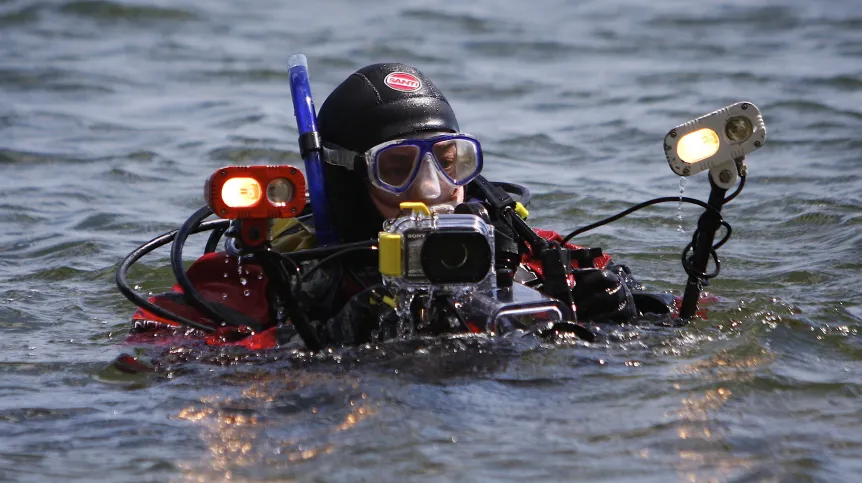
What lies at the bottom of the sea? Unexploded bomb, battle gas container, or rather ordinary piece of scrap metal? Researchers are working on a device that would help services determine that easily and without putting anyone\'s life in danger. In Kraków, they are developing a small underwater hazardous materials detector.
At the bottom of bodies of water - lakes and seas - there are still hazardous materials - including those from the Second World War. Once a suspicious object is located (using radar or metal detectors), a diver has to go down to the bottom and investigate whether the object is actually dangerous. It is clear that this solution is far from perfect: not only is it dangerous, but also not always effective. If the object is non-standard, a diver can only guess what is inside.
Therefore, scientists from the Jagiellonian University are working on a mobile device for detecting hazardous materials underwater. The project leader Dr. Michał Silarski from the Institute of Physics at the Jagiellonian University explained in an interview with PAP that the detector will show the elements of which the object composed. Elemental composition of hazardous materials is so distinctive that it will be easy to identify the threat. "This way, without opening the container, we can look inside" - he argues.
The device will be the size of a suitcase. It can be easily transported and, for example, installed on an underwater probe. "Such probe would be controlled remotely from a vessel - using radio signal or a cable. The probe could scan the bottom and take measurements remotely, at a safe distance from the observer" - described the physicist.
Dr. Silarski wants to focus on the construction of the detector. It would be a device using scattered neutrons. "We shoot neutrons at the object. They pass through the object and arouse encountered atomic nuclei. With time, these nuclei emit gamma quanta which are unique to the individual elements" - the physicist described the operation of the device. He added that the production of fast neutrons would be achieved using compact generators colliding ions of deuterium with tritium (isotopes of hydrogen).
Neutron detectors of hazardous materials are not the idea of the Jagiellonian University. Similar solutions have already appeared on the market. Such devices can help detect drugs or improvised explosive devices at borders and airports. Researchers from the Jagiellonian University, however, want to go a step further.
"In principle, the method using neutrons should not work in the water. This is the difficulty that we have to overcome in our research" - said Dr. Michał Silarski. He explained that during underwater test speeding neutrons collide with oxygen, which is in the water molecules. This distorts the test results.
An innovation in the device from the Jagiellonian University will be guides - tubes filled with gas, through which scattered neutrons will go to the vicinity of the object, and through which the gamma quanta produced during the test will return to the device. Scientists hope that this will help avoid problems associated with underwater operation of the device.
Dr. Silarski does not rule out that the project may develop a system for obtaining 3D images of the test objects. By analysing the time in which measurement results reach the detector, it could be possible to recreate the spatial image of the object - in terms of elemental composition. It would then be possible, for example, to determine where exactly explosives are located in the object. And that would make disarming the object much easier.
The research project is only just beginning; it is planned for three years. The project is financed by the LEADER programme of the National Centre for Research and Development.
PAP - Science and Scholarship in Poland, Ludwika Tomala
lt/ mrt/
tr. RL













